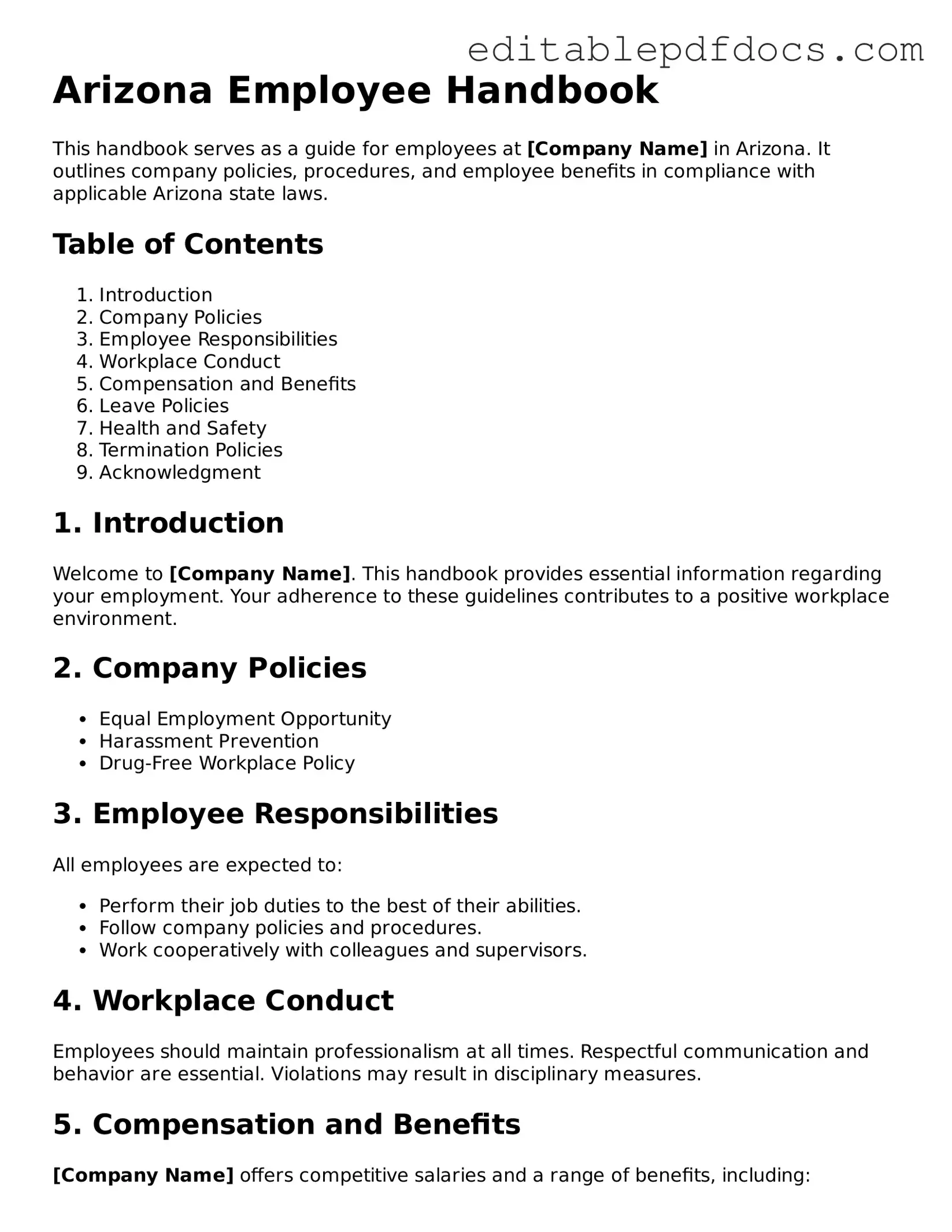Creating an employee handbook is an essential step for any business operating in Arizona, as it serves as a foundational document that outlines company policies, employee rights, and workplace expectations. This handbook not only helps establish clear communication between employers and employees but also ensures compliance with state and federal laws. Key aspects typically covered in an Arizona employee handbook include workplace conduct, anti-discrimination policies, benefits and compensation details, and procedures for addressing grievances. Additionally, it may outline attendance expectations, dress codes, and safety protocols, all of which contribute to a positive work environment. By providing this comprehensive guide, businesses can foster a culture of transparency and accountability, making it easier for employees to understand their roles and responsibilities within the organization.
